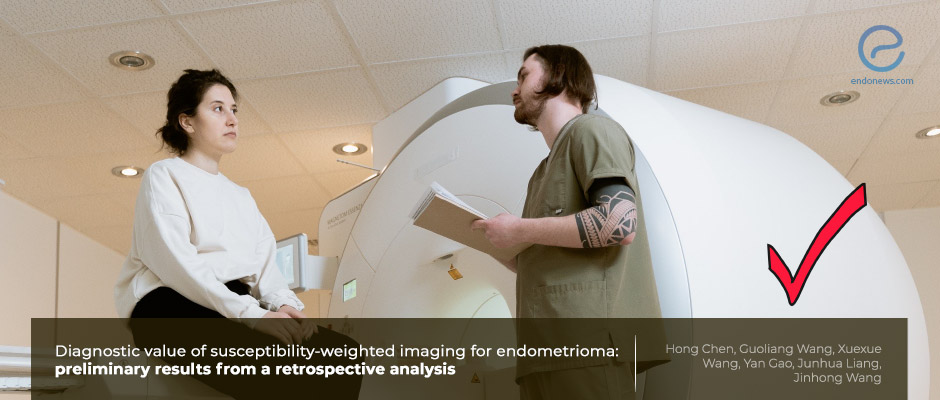Preoperative endometrioma diagnosis
Aug 19, 2021
"Susceptibility-weighted imaging" is useful for the preoperative identification of endometrioma.
Key Points
Importance:
- Susceptibility-weighted imaging is an advanced magnetic resonance imaging technique identifying hemorrhagic lesions with an extreme sensitivity to blood breakdown compounds.
Highlights:
- The authors proposed that the detection of signal voids by "susceptibility-weighted imaging" can help to differentiate endometriomas from other cystic lesions of the ovaries.
What's done here:
- This is a retrospective study.
- Patients with clinically suspected endometriosis underwent MRI and "susceptibility-weighted imaging" before the laparoscopic surgery.
Key Results:
- Imaginary analyses with "susceptibility-weighted imaging" were performed on 73 patients with 119 pathological ovarian lesions.
- Punctate or curvilinear signal voids along the cyst wall or inside the lesion were used as diagnostic criteria for endometrioma.
- "Susceptibility-weighted imaging" visualized these signs 67 of 85 (78,8%) appropriately diagnosed endometriomas.
- The authors detected 85 endometriomas in forty-six patients and, 33 non-endometrioid cystic lesions in twenty-six patients.
Lay Summary
The current clinical experience of gynecologists and radiologists indicates that distinguishing a hemorrhagic cyst from endometriomas or ruptured corpus luteal cysts is compelling. For this reason, chosen criteria that can lead to decisive distinctions are valuable for preoperative identification of endometriomas.
Classical magnetic resonance imaging characteristics of the high signal intensity for endometriomas on both TW1 and TW2 imaging are changeable and unreliable.
The novel technique named "susceptibility-weighted imaging" is sensitive to blood breakdown compounds that appear with small signal voids. Since endometriomas contain hemosiderin-laden macrophages in their cyst wall and necrosis at the edges due to periodic bleeding inside the cysts, "susceptibility-weighted imaging" is able to detect these signals in endometriomas. A previous study reported that rare microhemorrhage and calcification in the brain lesions can cause a deficiency of susceptibility signals.
In this retrospective study, Chen et al. from the Department of Medical İmaging, Shangai Jiao Tong University School of Medicine, China, examined the reliability of magnetic resonance imaging with susceptibility-weighted imaging sequences in endometriomas for an appropriate preoperative diagnosis.
The results of preliminary analyses showed that "susceptibility-weighted imaging" sequences detected punctuate or curvilinear signal voids along the cyst wall or inside the lesion in almost eighty percent of endometriomas. The study contained five ruptured corpus luteum cysts that did not have signal voids along the cyst wall by "susceptibility-weighted imaging" were previously misdiagnosed as endometriomas by TW1 and TW2 sequences.
The authors observed that signal loss in "susceptibility-weighted imaging" sequences occurred more frequently for endometriotic cysts than for non-endometriotic cysts, so they concluded that "susceptibility-weighted imaging" is a useful technic to facilitate the preoperative diagnosis of endometriomas.
(*) Kim HS, Jahng GH, Ryu CW et al. Added value and diagnostic performance of intratumoral susceptibility signals in the differential diagnosis of solitary enhancing brain lesions: Preliminary study. AJRN Am J. Neuroradiol. 2009;30:1574-1579.
Research Source: https://pubmed.ncbi.nlm.nih.gov/34098746/
susceptibility-weighted imaging magnetic resonance imaging hemoragic ovarian cyst endometrioma

